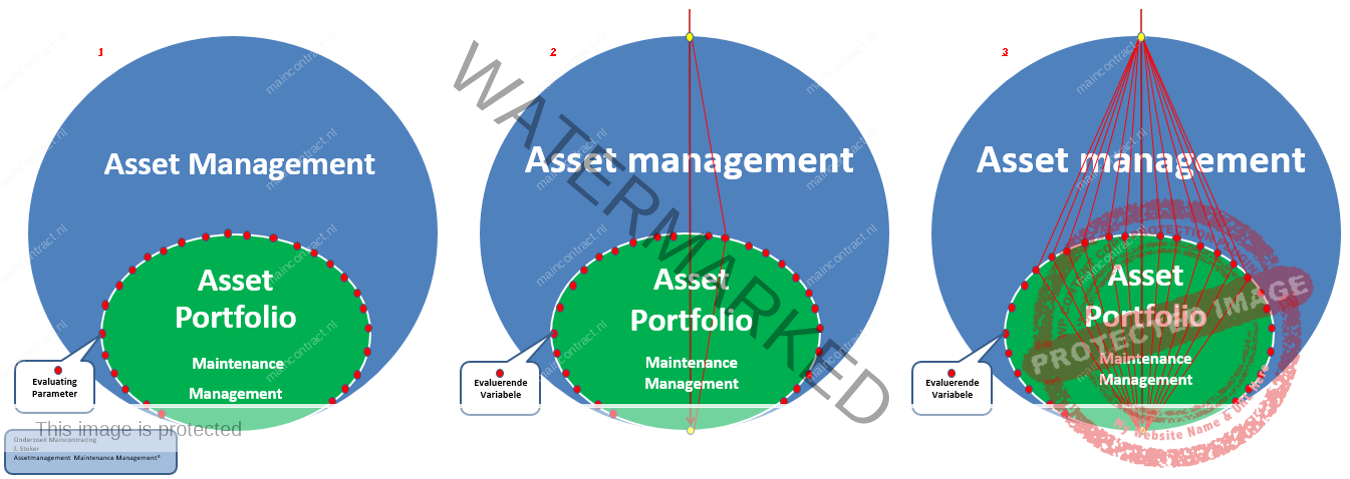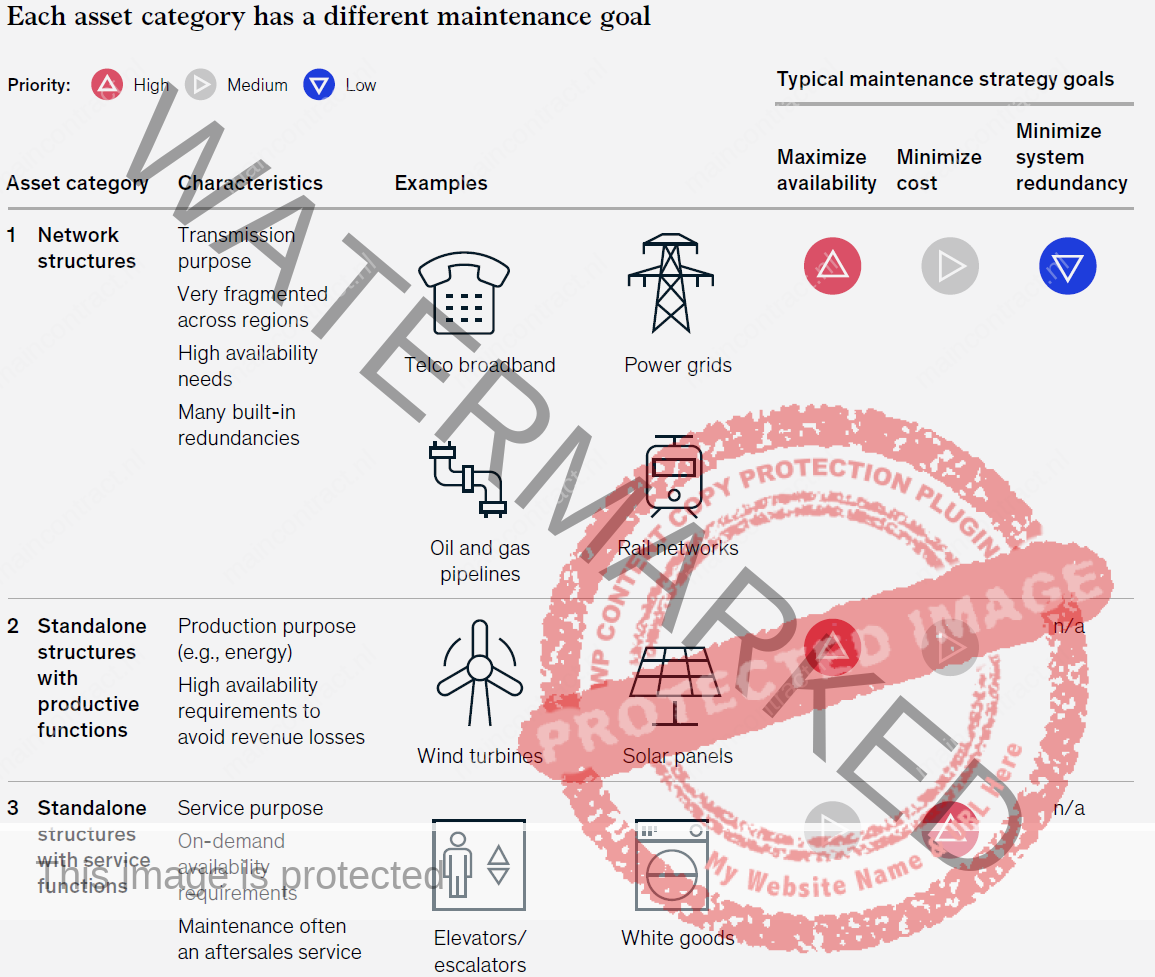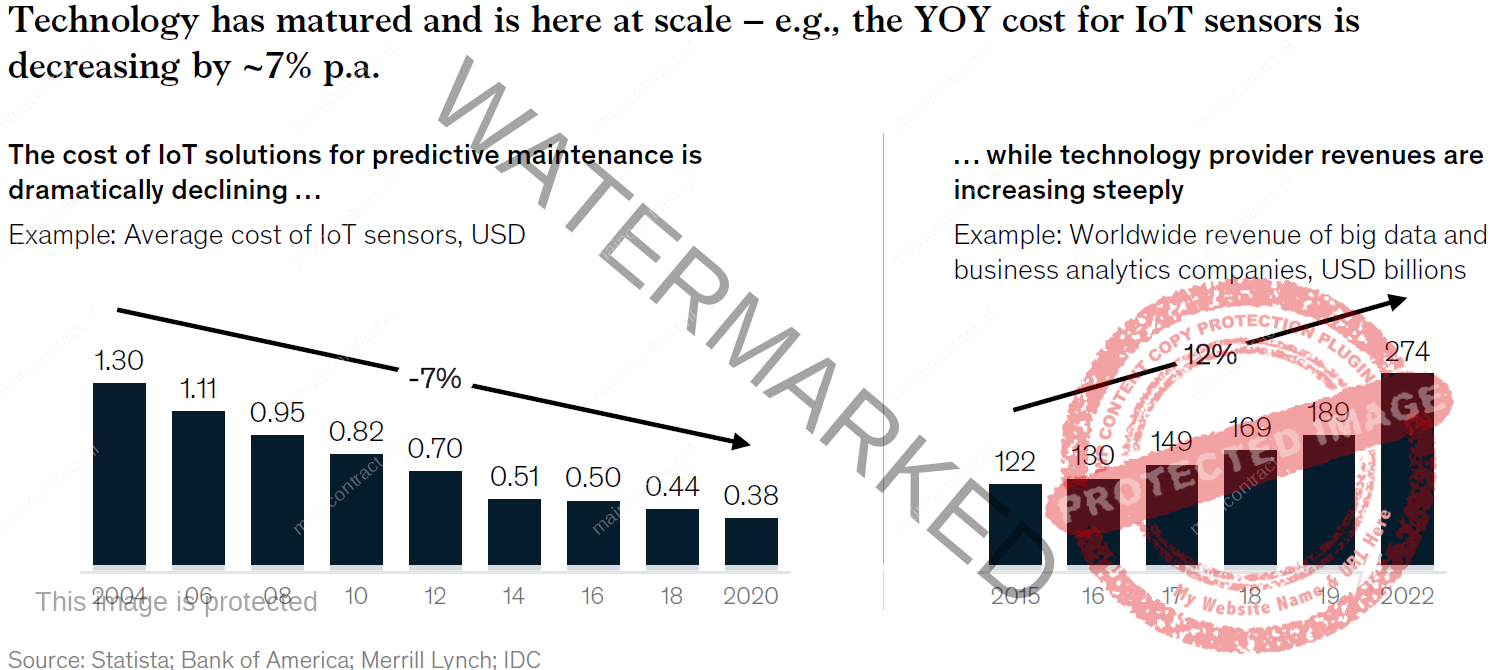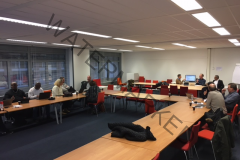Pagina Inhoud
- Publicatie 20 juli 2020
![]()
This paper focuses on how to drive change to capture the full value of technology-enabled maintenance transformations – it is not simply another article purely describing technological innovation. For the past few years, industries with distributed fixed assets have mostly concentrated on increasing asset availability and system reliability. As a result, these have reached new heights across industries on average. In contrast, the opportunities for labor efficiencies created by new technologies have not yet been fully realized.
The key challenge to capturing the full value from technology-enabled maintenance transformations is a massive mindset shift. Companies need to entirely rethink how they manage their maintenance workforce: from identifying clear technology-enabled business cases to capturing their benefits in the deployment phase. They need to minimize the root causes for low productivity, adapt their organizational setup and performance management, and build the required skills.
In many industries, the asset structure is fragmented throughout a region and burdened by legacy equipment with limited technological possibilities.
Typically, there is no dedicated maintenance team per asset; the teams cover whole areas and regions. The past focus on high asset availability has often led to low labor productivity levels, typically caused by non-optimal maintenance frequencies, no or limited remote information on asset conditions, long travel and transport times, as well as unevenly distributed knowledge in the workforce.
To drive efficiency and labor productivity for distributed fixed assets, optimizing preventive maintenance, reducing the number of maintenance trips, minimizing travel time, and sharing knowledge are key. New technologies such as sensor-based condition monitoring, automated and dynamic planning, scheduling, dispatching and routing, and digital instructions allow for significant changes in all these areas. Already today, advanced companies have realized technology-enabled efficiencies in labor productivity and a 20 to 30 percent decrease in maintenance costs. As maintenance costs amount to 20 to 60 percent of overall opex spend, depending on industry and asset type, these opportunities are sizable and should be captured. In addition, the cost of innovative technology has dramatically decreased over the past several years. The opportunity has therefore never been better.
![]()
Author: McKinsey& Compagny in collaboration with Lumics
1. The next level of maintenance – capturing the full benefits of next-generation technologies
Industries with distributed fixed assets – be they telecommunication broadband or railway networks, wind turbines or drilling facilities, elevators and escalators or washing machines – share specific challenges when it comes to maintenance. As the assets are distributed throughout a region, there is usually no dedicated maintenance team per asset. To the contrary, maintenance workers cover whole areas, travel to the assets’ various locations, and bring the appropriate instructions, spare parts, and tools. This leads to a number of issues for asset maintenance:
- Non-optimal maintenance frequencies due to rigorous time-based maintenance or utilization-based maintenance strategies
- Limited remote information on asset conditions, entailing unnecessary maintenance trips or costly manual inspections
- Long travel and transport times, rendering unplanned maintenance highly costly and incurring additional safety hazards for maintenance workers
- Particularly challenging knowledge sharing and preservation as well as performance management due to the decentral nature of maintenance crews
- Detachment of central planning, scheduling, and dispatching teams from frontline maintenance workers’ needs
- High reaction times in cases of emergency due to a lack of information on maintenance workers’ locations.
Historically, the focus for distributed fixed assets has been on increasing availability
- A strong focus on infrastructure replacement and growth
- Availability/reliability levels reaching new heights across industries
- High maintenance costs due to unaddressed labor inefficiencies and system redundancies
![]()
Asset Management Systems: See The Line of Sight-Deepening the subject
![]()
2. Three categories od disrupted fixed assets with differing maintenance strategy goals
Even though they face similar challenges with respect to maintenance, distributed fixed assets differ in their purpose: transmission, production, or service. These assets thus fall into three categories based on their typical maintenance priorities (see Exhibit A).
- Network structures Assets that are connected to a network structure, e.g., telecommunications broadband networks, oil and gas pipelines, or power grids, typically have a transmission purpose. These assets have particularly high reliability needs as they are often subject to high regulatory requirements, with shortfalls severely penalized. Operators address these high reliability requirements by incorporating redundancies into the network structure and prioritizing asset availability in their maintenance strategy.
- Standalone structures with productive functionsFragmented productive assets, e.g., solar panels or wind turbines, have similar availability needs to the network structures discussed above. Here, asset downtime incurs high revenue losses and breakdowns create significant safety and environmental hazards. The goal is therefore to avoid them: maximizing asset availability has been the typical maintenance priority over the past few years.
- Standalone structures with service functionsThe availability requirements of distributed assets with service functions, e.g., white goods or elevators and escalators, differ from the “always on” imperative required by network structures and standalone structures with productive functions. Standalone assets with service functions need to be available “on demand” only. Furthermore, maintenance is often provided by OEMs as an aftersales service or by independent workshops. For these maintenance providers, reducing maintenance costs has typically been a priority over the past several years.
3. Maintenance Costs
At the same time, ensuring high levels of asset availability and system reliability is a key priority for operations leaders. Often, regulations severely penalize shortfalls (e.g., of power transmission and distribution), breakdowns incur high revenue losses (e.g., for wind turbines) or breakdowns result in high safety and environmental dangers (e.g., in drilling facilities). Companies have been investing heavily in increasing their asset availability; for instance, through large investments in new infrastructure (e.g., in the telecommunications industry) or via the introduction of new technological assets (e.g., sensor-based condition monitoring). As a result, the availability and reliability of distributed fixed assets is very high across industries. To give a few examples from various industries and regions:
Asset Management Systems: See The Line of Sight-Deepening the subject
Maintenance costs typically range between 20–60% of opex spend, depending on industry, asset type, and capex spend – an opportunity that has only been a minor priority over the past couple of years
- The German power transmission and distribution network reached a reliability level of 99.997 percent in 2018 – translating to an average outage duration of only 13.91 minutes for end consumers.1
- Telecommunications companies offer broadband services with service-level agreements ensuring 99.999 percent availability.
- New wind turbines reach availability levels of 97 to 98 percent.2
1 Bundesnetzagentur, SAIDI.
2See Sebastian Pfaffel, Stefan Faulstich, and Kurt Rohrig, “Performance and reliability of wind turbines – a review,” Fraunhofer Institute for Wind Energy System Technology, November 19, 2017.
The combination of challenging maintenance conditions and high asset availability requirements typically results in increased labor and thus in high overall maintenance costs. Depending on factors like industry, asset type and age, fragmentation level, or capex spend, maintenance costs typically range between 20 and 60 percent of overall opex spend. Even though the opportunity is significant, improving labor productivity and thus driving down maintenance costs has been given less priority over the past few years. However, as skilled labor is becoming increasingly scarce – particularly in remote areas – boosting labor productivity in maintenance is becoming more and more important on operations leaders’ agendas.New technologies can help address this issue and move companies closer to best practices, including best practices from other industries and sectors. The opportunity is particularly ripe as the cost of new technologies has dramatically decreased over the past few years. Most companies have therefore already started their journey towards a more digitized and automated maintenance regime.
Reed the full report
5. React & Article
![]()
Discuss or give your opinionFollow on FacebookFollow on Twitter
Verwante Artikelen












